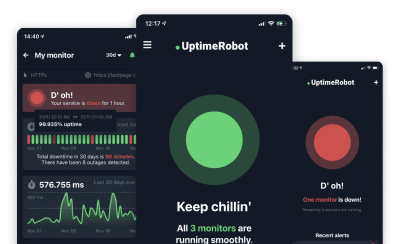Quick links
We’re excited to announce the official release of the UptimeRobot Terraform provider, a feature that many of you have been requesting.
Starting today, you can manage your UptimeRobot resources, including monitors, alerting integrations, maintenance windows, and public status pages, directly in your Terraform configuration. Let’s take a closer look.
Why Terraform?
If you’re already using Terraform to manage your infrastructure, you probably don’t need convincing. But just in case you love knowing about perks and benefits, here’s a quick recap of why Infrastructure as Code (IaC) makes so much sense:
- Version control for your infrastructure
- Repeatable deployments across environments
- Collaboration and visibility for DevOps teams
- Auditability of every change
Now, with the UptimeRobot provider, you can extend that same mindset to your uptime monitoring stack..
What can you do with the UptimeRobot Terraform provider?
You can now manage all your core UptimeRobot resources via Terraform. Here’s what’s supported in this first release:
Monitors
Create and configure uptime monitors for websites, APIs, ports, and more.
Documentation →
Maintenance Windows
Define recurring or one-off maintenance periods to pause monitoring.
Documentation →
Integrations
Set up alerting integrations (like Slack, MS Teams, Webhooks, etc.) as code.
Documentation →
Public Status Pages (PSPs)
Automate the creation of public-facing status pages.
Documentation →
Getting started
To use the provider, you’ll first need to configure it with your UptimeRobot API key. You can obtain your API keys from the Integrations page, located under the API section.
👉 Check out the Terraform Registry page for full installation instructions and resource docs.
Share your feedback
We’d love to hear how you’re using the provider or what’s missing.
Join the conversation in our Discord, open an issue on GitHub, or submit a suggestion on our Nolt board.
